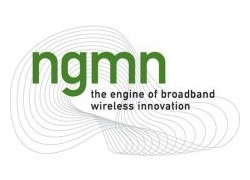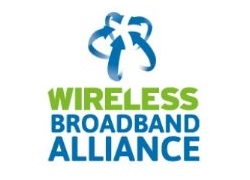Mobile operators have now received further verification that Wi-Fi will play a critical role to the success of 5G, as illustrated in a new white paper developed by the Wireless Broadband Alliance (WBA) and the Next Generation Mobile Networks (NGMN) Alliance.
Developed with input from mobile carriers, telecom equipment manufacturers and Wi-Fi advocates, the WBA & NGMN Joint Task Force: RAN Convergence White Paper explores the importance of existing and future Wi-Fi and cellular convergence, highlighting techniques that enable convergence and identifying solutions to bridge technology gaps.
According to the paper’s findings, mobile operators will benefit from the convergence of Wi-Fi and 5G by gaining improved visibility into Wi-Fi networks, affording them the ability to control customer experience, deliver better services to customers and provide enterprise Wi-Fi network management solutions to enterprise customers.
Wi-Fi operators, meanwhile, will benefit from convergence by gaining improved visibility and transition management as they operate overlapping cellular and Wi-Fi networks, ultimately resulting in an improved user experience. Additionally, enterprise Wi-Fi networks will gain the ability to access operator-provided 5G services.
Importantly, the paper also identifies new business opportunities created through the convergence of Wi-Fi and 5G at the network and RAN layers, including enterprise use cases, manufacturing, public hotspots and residential applications. Some of the key use cases covered in the paper include:
- Convergence of 5G and Wi-Fi for Enterprise Wi-Fi: Currently, most enterprises use Wi-Fi technology to provide wireless access to employees, contractors and visitors. The paper identifies three scenarios for convergence of Wi-Fi and 5G to ensure a diverse set of deployment scenarios and business opportunities for both Wi-Fi providers and mobile operators.
- Factories of the future: Industry 4.0, or the Fourth Industrial Revolution, is driving a significant increase in the amount of data that traverses the network, especially in low-power wide-area networks (LP-WANs). At the same time, manufacturers increasingly are incorporating machine learning (ML), artificial intelligence (AI), augmented reality (AR), advanced analytics and automation into their processes. The paper provides a deployment scenario for a manufacturing environment in which the convergence of 5G NR and Wi-Fi are used to provide improved connectivity, traffic routing and support for Wi-Fi devices with and without identity credentials.
- Connected cities: Enterprises and cities increasingly are deploying Passpoint-enabled Wi-Fi hotspots to provide the public with Internet connectivity. The paper includes two scenarios that illustrate how the convergence of Wi-Fi and 5G will enable enterprises and cities to create contiguous Wi-Fi access through the use of public hotspots.
- Residential connectivity: A variety of devices are used by consumers to deliver Wi-Fi connectivity for both mobile and fixed devices in the home, including Ethernet, powerline and Coax. Additionally, residential local area networks (LANs) increasingly are connected with community Wi-Fi service, while femtocells are used to bolster connectivity in certain deployments. The paper provides a scenario for providing a mix of traffic within the home Wi-Fi network and femtocell 5G deployments.

The paper concludes that a new set of 5G use cases and verticals may require combined resources from both cellular and Wi-Fi networks. This will provide cost-effective solutions that meet diverse sets of requirements on throughput, latency, connection density, coverage, availability and reliability. This is especially important for smartphones that carry a significant amount of data traffic by accessing Wi-Fi. Convergence of Wi-Fi and 5G will lead to better user experience for smartphone customers and create new business opportunities for both Wi-Fi and mobile operators.
Additionally, the paper addresses a number of challenges that exist when integrating Wi-Fi and cellular networks in enterprise, residential and public Wi-Fi deployments. In particular, the paper explores the benefits of creating a standardised interface between Wi-Fi and cellular networks to improve end-to-end network performance, elevate user experience and, ultimately, empower both mobile and Wi-Fi operators to create new business opportunities utiliing the converged technologies.
“Mobile and Wi-Fi operators, equipment manufacturers and end users all stand to benefit a great deal from the continued convergence of Wi-Fi and cellular networks, especially with the release of Wi-Fi 6 later this year and the continued development of 5G networks,” said Tiago Rodrigues, general manager, WBA. “As the paper highlights, convergence of 5G and Wi-Fi 6 in the RAN is vital for 5G coverage in dense locations and indoor deployments, giving stakeholders the ability to cost effectively improve performance, while ultimately improving return on investment (ROI) for mobile operators.”
Sanctioned by the top 38 mobile operators around the world, the paper continues work between WBA and NGMN to identify business opportunities, challenges and key use cases made possible through the convergence of Wi-Fi and existing cellular networks, as well as future 5G network deployments. Input was provided by a number of mobile operators, including BT, Orange, Rogers and US Cellular. Leading telecom equipment manufacturers that provided input include Intel, Broadcom, Cisco, Accuris Networks and Huawei.
“The work we’ve done with WBA to identify new use cases and challenges in the convergence of Wi-Fi and 5G is beneficial for operators, vendors and end users,” says Peter Meissner, CEO, NGMN Alliance. “It is through initiatives like this one that our industry solves important issues and ensures the success of technologies for the future.”
The WBA and NGMN intend to continue exploring convergence of Wi-Fi and cellular technologies, with input from 3GPP, IEEE and the Wi-Fi Alliance.
Comment on this article below or via Twitter: @VanillaPlus OR @jcvplus






